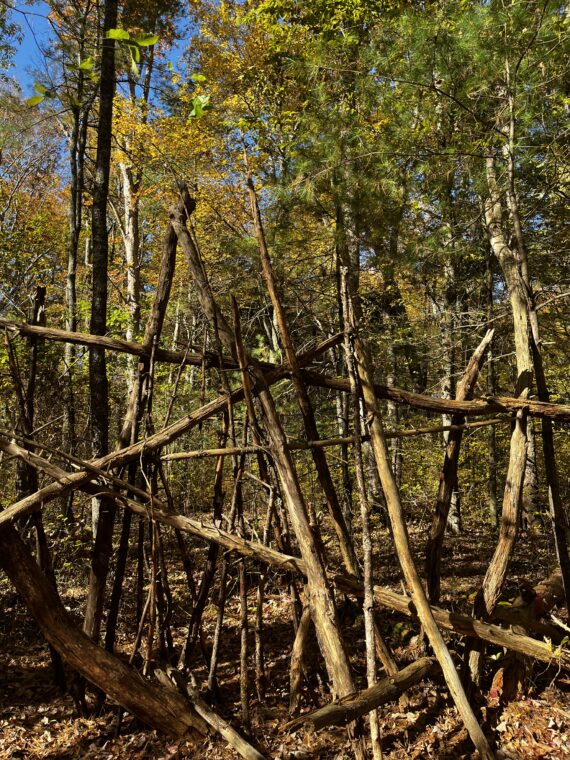As most college students know, college comes with enormous amounts of stress and anxiety. It can be hard to find time to cope, relax, and process these feelings. With this in mind, students at Wheaton are lucky to have the Wheaton Woods surrounding the southern side of campus. Not only is it a beautiful place for a walk, but this small forest hosts lots of history, memories, and life for the Wheaton College community.
This 40-acre plot of woodland is owned by Wheaton College and has been a core part of the campus for 130 years. It was generously donated to the former women’s seminary in 1894 by Mrs. Eliza Baylies Chapin Wheaton, the primary benefactress and headmistress of the seminary for more than 70 years. Fascinated by trees, flora specimens, and collections for her garden, these woods boasted a variety of species of flora for the late Mrs. Wheaton, and now for current students. Although the land was donated to the school, research conducted by former biology student Ellen Chapman in 1978 reveals that the land wasn’t preserved from construction until 1963, when the biology department petitioned the town to allow Wheaton to preserve the land (Chapman). Thanks to that petition, Wheaton is now responsible for preserving 25 of the 40 acres for student and faculty field research.
While the area was originally known as the Seminary Woods, it would later be renamed College Pines. The abundance of pine trees gave way for an arboretum to be established in 1936, but the space was unfortunately destroyed by a hurricane in 1938.
Most of the knowledge about Wheaton’s trees can be attributed to Dr. Mable Rice, the head of the Botany department in 1922. Her thorough observations and research led to a collection of botanical records of trees all around Wheaton’s campus. Some recurring species are White Oak (Quercus Alba), Red Spruce (Picea Rubens), and American Beech (Fagus Granfolia). An honors thesis paper written by former student Ellen Chapman in 1978, suggests that red and white oak will continue to grow and retain importance in the Wheaton Woods, while white pine will decline in population. (Chapman).

American Beech tree spotted in Wheaton Woods
Not only are the woods home to trees, but they also boast different types of fungi, which are of particular interest to the Microbiology department. Primrose Boynton, Assistant Professor of Biology at Wheaton, is researching fungi found abundantly in the Wheaton Woods called Saccharomyces paradoxus, which is the closest relative to the typical yeast used to make beer and bread. When asked about her findings, Professor Boynton said, “The rare ones are hard to find, simply because they’re rare, but student researchers and I are always on the lookout for them because we’re interested in describing new species.” It is clear that most professors and students are enthusiastic about the many recreational and research opportunities in the Wheaton Woods.
After exploring the woods and strolling down the meandering trails, some student-made landmarks revealed themselves. A couple of notable ones included a wooden sculpture made from propped-up branches, and a campfire full of ash. These are likely the craft of some Wheaton students who were not afraid to show their appreciation for the woods. Students should take advantage of this beautiful property and enjoy a nice walk through the Wheaton Woods.

Student-made structure out of tree branches in Wheaton Woods